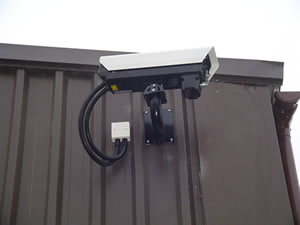Custodian CCTV Footage
Comments Off on Custodian CCTV Footage
 Intelligent video surveillance technology has a plethora of benefits for police authorities in town centres, transportation networks and many other public and private facilities.
Intelligent video surveillance technology has a plethora of benefits for police authorities in town centres, transportation networks and many other public and private facilities.
The presence of CCTV can reduce graffiti, loitering and anti-social behaviour, whilst at the highest-level it assists in the prevention and investigation of national security issues. However, the same high-quality digital video recording and advanced video content analytics solutions can have an important and impactful role within the police station itself.
Whether it is for internal review or as part of the judicial process, police stations are under constant pressure to prove that from the moment an individual enters the building to the time they leave, the correct procedures are fully observed in relation to the custody process.
Having a CCTV system implemented throughout the station to monitor and record images in the areas in which a person held in custody will visit, such as the charge desk, halls, corridors and custody suites, provides a real-time and full historic record of every movement made during this time.
These images can be used to prove or disprove physical ill treatment, but it is not enough information to demonstrate that procedural compliance, in relation to what was or wasn’t said. For this reason it is important to synchronise CCTV seamlessly with audio, strategically placing microphones (such as at the charge desk and interview rooms) to capture conversations and statements made between an officer, other staff, official representative and the person in custody.
Of course it is important to have within such a system the ability to securely screen areas of any camera’s view to meet privacy and human rights requirements, but still enable a suitably authorised investigating officer to remove the privacy screen from recordings in the event of a serious incident
Integrating with other systems
With images and audio being recorded and stored together digitally the benefits many forces already recognise (especially within their command and control rooms) for archiving, retrieval and disclosure purposes are realised for internal affairs.
With the internal surveillance system in place (whether at a single site or more likely across multiple locations) it is possible to integrate with the many other security and life-safety systems such as intercom and access control, and the provision of user interfaces that are specifically designed to facilitate custody management, including automatic display of cell cameras, instant replay and reporting.
The implementation and management of such intelligent systems have become far easier and more resource efficient as increasing numbers of police authorities choose IP technology to cope with the amount of information that is required to move across their networks (from the station to the headquarters, or between individual departments).
Clearly, the cameras and microphones must be situated within the station. However the monitoring and recording of information can be situated off-site, enabling multiple stations to be monitored and information recorded from a single central location. This enables costs and resources to be distributed and provides a central accessible repository for intelligence when needed.
From the collation of evidence, to ensuring the security and safety of the police officer, the general public and the people in custody, the use of high-quality digital video recording and advanced video content analytics solutions are today becoming an integral part of the judicial process.
Comments are closed